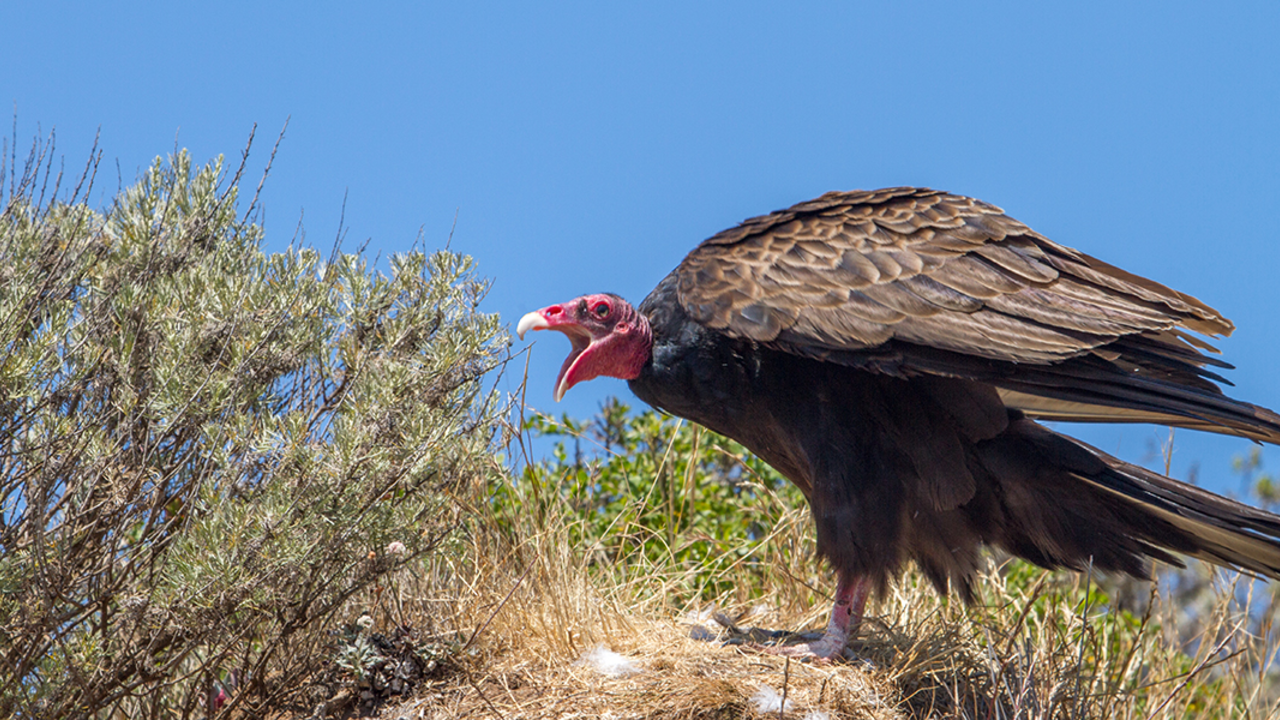My Friend, the Turkey Vulture

Kirke Wrench/National Park Service
It has been said vultures are cleansers of the environment, or that they are symbols of motherhood for their ability to make life from death. But I say that Turkey Vultures are, above all else, loyal. They are the truest friend, at least to other vultures, because being a Turkey Vulture requires cooperation, and that starts with the vulture syrinx—or lack of one.
It was Mildred Miskimen of Miami University who first dissected the upper throat of a Turkey Vulture in 1957 and found: “The Turkey Vulture shows no syrinx. The trachea branches into two bronchi with no syringeal drum, no pessulus, and no membrane between cartilages or at the apex of the bronchi.” The short account here is that birds need a syrinx—the avian voice-box—to sing, call, cluck, tweet, hoot, trumpet, or warble. To communicate.
And Turkey Vultures don’t have one.
So what do Turkey Vultures say, sans syrinx? Most raptor rehabbers note that Turkey Vultures “grunt and hiss”—quiet sounds that work in close proximity. But vultures have a trick to communicate long-distance messages—like “I may have a spot of food here”—without making a sound.
Turkey Vultures are one of a few bird species that are proven smellers, able to perceive minute stenches from decaying meat. Back in the 1960s the odorant ethyl mercaptan was placed into southern California oil pipelines to learn where the leakages were. Biologist Kenneth Stager was documenting Turkey Vulture smell perception, and realized the rotten smell from even the smallest leak had an avian indicator. Simply follow the Turkey Vultures. Where they flock, there’s your leak.
This brings us right back to cooperative vulture food-finding. Turkey Vultures mostly hunt in loose, widely-spaced flocks. When one vulture catches a whiff of rot, it may then make dozens of repeat flights over the stinky area. These flights are ritualized—long, shallow, parabolic dives that seem to be the vulture version of yelling “Hey! We have food here! Come join!” And indeed, other vultures come closer to check things out.
I have seen this many times, this parabolic-flying Turkey Vulture town crier routine, and I used to wonder: why share? One answer is that they may need help from others to tear a thick mammal hide apart. Or maybe they provide safety in numbers; it can take a long series of flaps for a well-fed vulture to get off the ground, time enough for a coyote or puma to do its job.
But I prefer to attribute this to loyalty, to vulture friendship. I think it’s time for our culture to choose to see vultures in a more positive light, in contrast to the pop-culture conception of them as the deathly specters of Disney cartoons.
Lacking a syrinx, Turkey Vultures merely use what they have—a dramatic, trim-winged, parabolic glide—repeated over and over again to snare the attention of hungry colleagues, to relish the smell, to share the bounty.
Photos by Don Moseman
